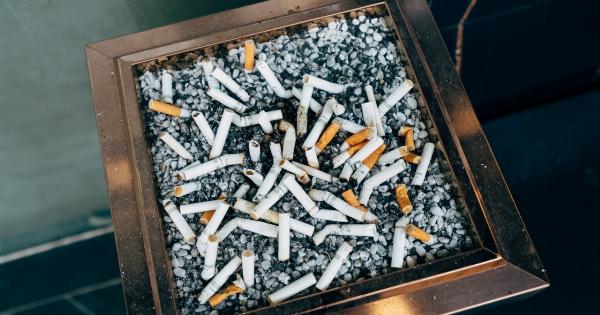Smoking not only causes harm to the smoker but also to the ones around them. Secondhand smoke is the smoke exhaled by the smoker and the smoke coming off the burning tobacco product, and it can have severe health consequences for those exposed to it.
One of the deadliest effects of secondhand smoke exposure is oral cancer.
What is secondhand smoke?
Secondhand smoke, also known as passive smoking, is the smoke produced by burning tobacco products such as cigarettes, cigars, and pipes that is inhaled by non-smokers.
Secondhand smoke is a mixture of smoke exhaled by the smoker and the side-stream smoke from the burning tobacco product. Almost a third of the world’s population is exposed to secondhand smoke, and it is a serious public health concern, particularly in enclosed spaces like homes and cars.
What is oral cancer?
Oral cancer, also known as mouth cancer, is a type of cancer that starts in the mouth, lips, tongue, and throat.
The most common symptoms of oral cancer include persistent mouth sores, white or red patches in the mouth, unexplained bleeding, hoarseness, and difficulty swallowing. Tobacco use is one of the leading causes of oral cancer, and exposure to secondhand smoke can also increase the risk of developing the disease.
How does secondhand smoke increase the risk of oral cancer?
When a person smokes, the smoke contains harmful chemicals that are absorbed by the body and can cause cancer.
The same chemicals are also present in secondhand smoke, and when non-smokers inhale secondhand smoke, these chemicals can enter their bodies and cause damage to their cells. Over time, repeated exposure to secondhand smoke can increase the risk of developing various types of cancer, including oral cancer.
The link between secondhand smoke and oral cancer
Several studies have established a link between secondhand smoke exposure and an increased risk of oral cancer.
A study conducted by the National Cancer Institute found that non-smokers who were exposed to secondhand smoke had a 30% higher risk of developing oral cancer than those who were not exposed. Another study published in the American Journal of Epidemiology found that secondhand smoke exposure increased the risk of oral cancer by 42%.
Children and secondhand smoke
Children exposed to secondhand smoke are particularly at risk of developing oral cancer later in life. Children’s bodies are still developing, and they absorb more of the harmful chemicals present in secondhand smoke than adults do.
Children exposed to secondhand smoke are also at an increased risk of developmental problems, respiratory infections, asthma, and sudden infant death syndrome (SIDS).
Preventing oral cancer caused by secondhand smoke
The most effective way to prevent oral cancer caused by secondhand smoke is to eliminate exposure to secondhand smoke. This can be achieved by creating smoke-free environments in public places, workplaces, and homes.
Parents who smoke should refrain from doing so in the presence of their children, and smokers should avoid smoking in enclosed spaces where non-smokers are present. Quitting smoking is also beneficial, as it not only eliminates the risk of developing oral cancer but also reduces the exposure to secondhand smoke.
The bottom line
Oral cancer caused by secondhand smoke is a serious public health concern, and it can be prevented by creating smoke-free environments.
A smoke-free environment not only protects non-smokers from the harmful effects of secondhand smoke but also helps people quit smoking and reduce the risk of developing oral cancer and other smoking-related illnesses.





























